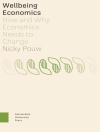In this comprehensive, state-of-the-art overview of risk communication, the field’s leading experts summarize theory, current research, and practice in a range of disciplines and describe effective communication approaches for risk situations in diverse contexts, such as health, environment, science, technology, and crisis. Offering practical insights, the contributors consider risk communication in all contexts and applications—interpersonal, organizational, and societal—offering a wider view of risk communication than other volumes. Importantly, the handbook emphasizes the communication side of risk communication, providing integrative knowledge about the models, audiences, messages, and the media and channels necessary for effective risk communication that enables informed judgments and actions regarding risk.
Editors Hyunyi Cho, Torsten Reimer, and Katherine Mc Comas have significantly contributed to the field of risk communication with this important reference work—a must-have for students, scholars, and risk and crisis communication professionals.
Inhoudsopgave
Acknowledgments
Introduction: Explicating Communication in Risk Communication – Hyunyi Cho, Torsten Reimer, and Katherine A. Mc Comas
Part I: Foundations of Risk Communication
Section 1: Risk Perceptions of Individuals
Chapter 1: Risk Perception – Nicolai Bodemer and Wolfgang Gaissmaier
Chapter 2: The Challenge of the Description-Experience Gap to the Communication of Risks – Ralph Hertwig and Renato Frey
Chapter 3: The Feeling of Risk: Implications for Risk Perception and Communication – Stephan Dickert, Daniel Vastfjall, Robert Mauro, and Paul Slovic
Section 2: Risk as Social Construction
Chapter 4: Social Construction of Risk – Adam Burgess
Chapter 5: The Role of News Media in the Social Amplification of Risk – Andrew R. Binder, Michael A. Cacciatore, Dietram A. Scheufele, and Dominique Brossard
Chapter 6: Rhetoric of Risk – Robin E. Jensen
Part II: Components of Risk Communication
Section 3: Models of Risk Communication
Chapter 7: Risk Information Seeking and Processing Model – Sharon Dunwoody and Robert J. Griffin
Chapter 8: The Societal Risk Reduction Motivation Model – Hyunyi Cho and Kai Kuang
Section 4: Audiences of Risk Communication
Chapter 9: The Role of Numeracy in Risk Communication – Priscila G. Brust-Renck, Valerie F. Reyna, Jonathan C. Corbin, Caisa E. Royer, and Rebecca B. Weldon
Chapter 10: Edgework and Risk Communication – Stephen Lyng, Thomas Workman, and G. H. Morris
Section 5: Risk Communication Messages
Chapter 11: Numeric Communication of Risk – Torsten Reimer, Christina Jones, and Christine Skubisz
Chapter 12: Narrative Communication of Risk: Toward Balancing Accuracy and Acceptance – Hyunyi Cho and L. Brooke Friley
Chapter 13: Visual Messaging and Risk Communication – Andrew J. King
Section 6: Risk Communication and the Media
Chapter 14: Media Portrayal of Risk: The Social Production of News – Susanna Priest
Chapter 15: Framing, the Media, and Risk Communication in Policy Debates – Matthew C. Nisbet
Chapter 16: Social Media and Risk Communication – Stephen A. Rains, Steven R. Brunner, and Kyle Oman
Part III: Contexts of Risk Communication
Section 7: Interpersonal Contexts of Risk Communication
Chapter 17: Risk Communication in Provider-Patient Interactions – Carma L. Bylund, Erin Maloney, and Emily B. Peterson
Chapter 18: Informed Consent – Janet Yang
Section 8: Organizational Contexts of Risk Communication
Chapter 19: Risk Communication in Groups – Tillman Russell and Torsten Reimer
Chapter 20: Crisis Communication – Timothy L. Sellnow
Section 9: Risk Communication in the Public Sphere
Chapter 21: Social Movements and Risk Communication – Hilary Schaffer Boudet and Shannon Elizabeth Bell
Chapter 22: Public Engagement in Risk-Related Decision Making – John C. Besley
Glossary
Author Index
Subject Index
About the Editors
About the Contributors
Over de auteur
Katherine A. Mc Comas (Ph D, Cornell University) is a professor in the Department of Communication at Cornell University. Her research focuses on how the processes of risk communication influence people’s attitudes and behaviors, including how the perceived fairness of scientific authorities and risk managers influences individuals’ concern about and acceptance of risk-generating activities.












